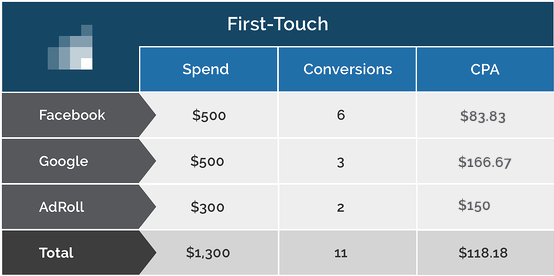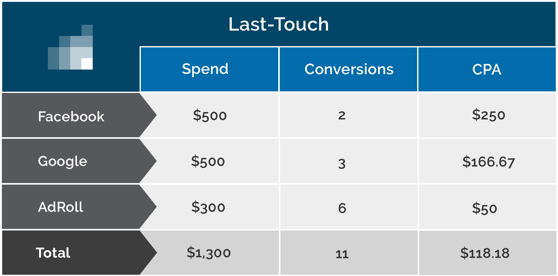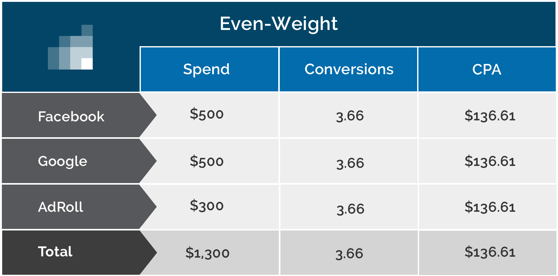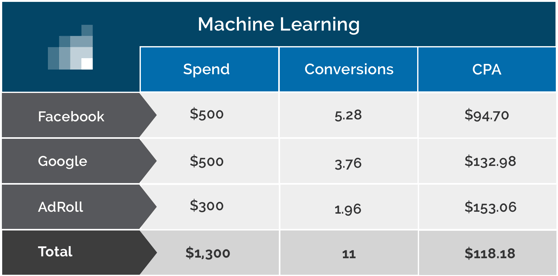In its most basic form, calculating cost per acquisition is:
amount spent / number of conversions
Finding amount spent per platform is easy — you can pull this directly from each platform. Figuring out how many conversions to give to each platform is more complicated.
You can’t just pull conversion counts directly from each platform because these conversion counts are usually inflated. Each platform’s actual conversion count is determined by which attribution model you’re using.
To better explain how each attribution model affects your CPA formula, let’s say you’re spending on three platforms: Google, Facebook and AdRoll. Your most common conversion path looks like this:
- User is exposed to your brand through a Facebook ad
- User is retargeted via AdRoll
- User performs Google search for your product and visits your website
- User converts on your site
First-Touch
With a first-touch attribution model, your first marketing interaction receives 100% of the conversion credit. Since your most common conversion path begins with Facebook, Facebook gets full credit for most of your conversions.
Check out what this looks like in the chart below:

Last-Touch
With a last-touch attribution model, your last marketing interaction receives 100% of the conversion credit. Since your most common conversion path ends with AdRoll, AdRoll gets full credit for most of your conversions.
You can see this in the chart below:

Even-Weight
An even-weight attribution model distributes conversion credit evenly across platforms.
This model is more sophisticated — we’re now acknowledging that multiple platforms deserve credit for driving a conversion, not just one.

Machine Learning
A machine learning model uses your historic data to assign conversion credit to each marketing interaction. It’s the most sophisticated model because it doesn’t rely on a predetermined formula.
Note how conversion counts are affected here:

Comparing Models
Now for the fun part — check out how your CPA per channel changes across different attribution models:

It’s pretty clear now that your attribution model plays a big role in how you value different platforms. And how you value different platforms determines how you allocate your budget.
So, if you’re thinking about how to best spend your next marketing dollar, consider the accuracy of your attribution model. Could it be overvaluing or undervaluing certain platforms?
A more accurate attribution model will guide you to better marketing decisions and ultimately better outcomes.
 Google
Google Facebook
Facebook Instagram
Instagram TikTok
TikTok Snapchat
Snapchat Reddit
Reddit Pinterest
Pinterest


.png?width=50&height=56&name=medal%20(1).png)








